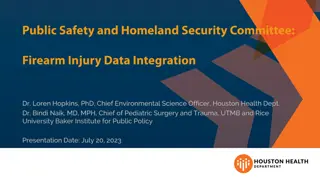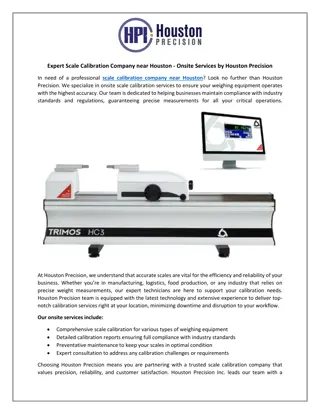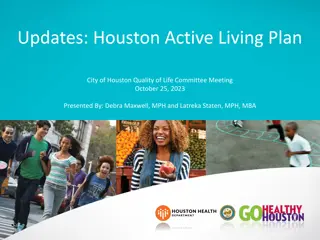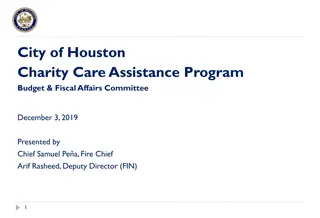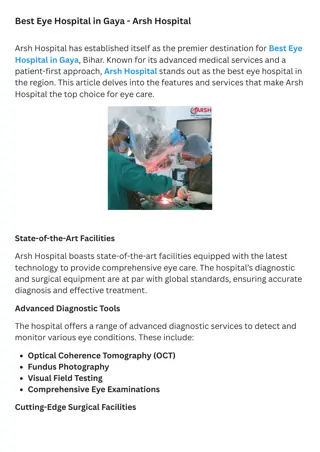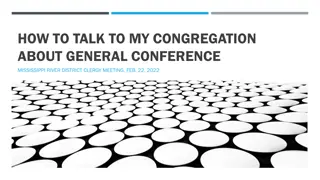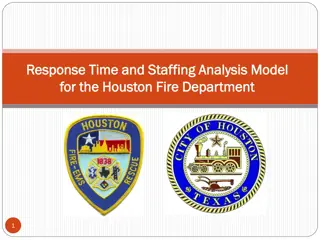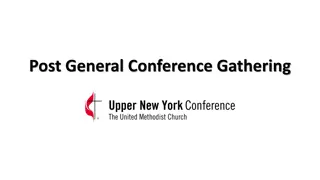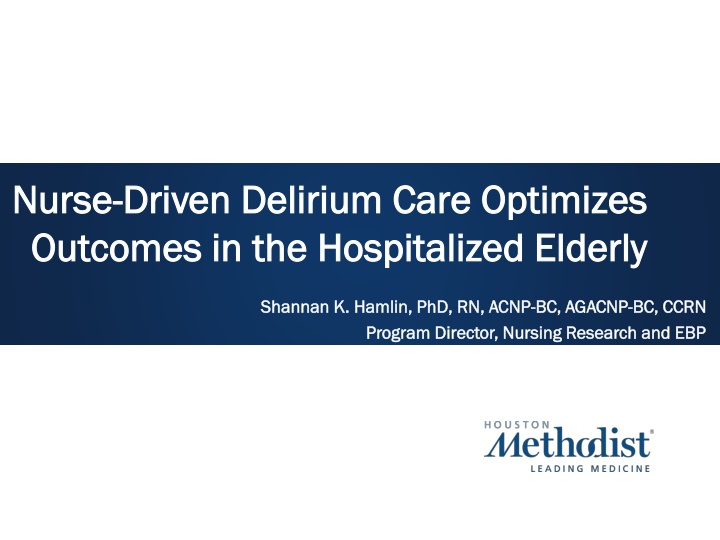
Optimizing Delirium Care for Elderly Patients in Hospitals
Explore the impact of delirium on hospitalized elderly patients, including its definition, predictors of outcomes, significance, and risk factors. Learn how improving delirium care can enhance patient outcomes and quality of care. Delve into the complexities of delirium management for better patient care.
Download Presentation

Please find below an Image/Link to download the presentation.
The content on the website is provided AS IS for your information and personal use only. It may not be sold, licensed, or shared on other websites without obtaining consent from the author. If you encounter any issues during the download, it is possible that the publisher has removed the file from their server.
You are allowed to download the files provided on this website for personal or commercial use, subject to the condition that they are used lawfully. All files are the property of their respective owners.
The content on the website is provided AS IS for your information and personal use only. It may not be sold, licensed, or shared on other websites without obtaining consent from the author.
E N D
Presentation Transcript
Nurse Nurse- -Driven Delirium Care Optimizes Driven Delirium Care Optimizes Outcomes in the Hospitalized Elderly Outcomes in the Hospitalized Elderly Shannan K. Hamlin, PhD, RN, ACNP Shannan K. Hamlin, PhD, RN, ACNP- -BC, AGACNP Program Director, Nursing Research and EBP Program Director, Nursing Research and EBP BC, AGACNP- -BC, CCRN BC, CCRN
Background Delirium Definition Acute confusional state with decline in cognitive functioning Fluctuating mental status, inattention, disorganized thinking Results from multiple factors Medication side effects Dehydration Acute illness Infection Acute neurologic event (i.e., stroke)
Background Predictor of Outcome Delirium independent predictor poor outcomes with increased risk for Mortality Dementia Institutionalization Length of stay Healthcare related costs $164 billion in the U.S (Inouye et al., 2013)
Background Significance Delirium is most frequent complication in hospitalized elderly Up to 50% affected 40% cases classified as preventable complication (Inouye et al., 2013)
Background Significance Significant public health relevance Delirium ranks top 3 conditions in need of quality care improvement in the elderly (Arora et al., 2007) National Quality Measures Clearinghouse of the Agency for Healthcare Research and Quality (AHRQ) states delirium in elderly quality of care and safety marker
Background Significance Despite clinical relevance and significant economic impact, less 50% delirium in elderly recognized by clinicians (Kales et al., 2003) Bedside nurses fail to recognize in 30% cases even when using validated delirium detection instrument (Inouye et al., 2001; Rice et al., 2011)
Background Risk Factors Age is primary variable associated with delirium For every year over age 65 increased risk for delirum (Huai et al., 2014) Gender data conflicting results (Elie et al., 1998; Ahmed et al., 2014) Significantly associated (Huai et al., 2014; Fortini et al., 2013) Illness severity (APACHE score) Increase length of stay Co-morbid conditions Hypertension Cognitive impairment Kidney failure Diabetes
Background Risk Factors Physical and chemical restraints (McCusker et al, 2001) Poly-pharmacy, especially benzodiazepines Laboratory values (i.e., low albumin) (Ahmed et al., 2014) Delirium previous hospitalization Impaired hearing/vision Limitations with activity (Moerman et al., 2012) History of falls *Risk delirium increases with each predisposing factor
Background Delirium Assessment Accurate delirium assessment non-existent in acute (non-critical) care setting by physicians or nurses Clinicians rely upon neurologic assessment with focus on orientation to diagnose delirium Lacks sensitivity and specificity in detecting delirium Prevention is most effective strategy to improve outcomes Routine cognitive specific assessment improves early delirium recognition leading to faster more effective interventions (Inouye et al., 1999)
Background Delirium Assessment Recognition best accomplished by routine, brief cognitive screening and astute clinical observation (Inouye et al., 1999) Nurses who spend most time with patients, best suited recognize subtle changes patient s behavior that assist with early detection Utilizing the bedside nurse as driver-of-change in the hospitalized elderly is unprecedented Delirium programs across country utilize specific delirium interprofessional teams with specialized expertise in elder care Nursing staff included as ancillary assistance to overall program (Inouye et al., 2013)
Nurse-Driven Delirium Initiative A brief, evidence-based, delirium specific assessment is conducted on acute-care patients 70 years every 12-hours by the bedside nurse A delirium screening tool was included in the electronic medical record as part of the nursing assessment Delirium assessment results positive nurse initiates the Delirium Acute-Care Nursing Interventions Protocol and leads coordination of interprofessional delirium interventions
Delirium Acute-Care Nursing Interventions Based on the Hospital Elder Life Program Cognitive impairment Sleep deprivation Immobility Visual impairment Hearing impairment Dehydration
Delirium Acute-Care Nursing Interventions Central to the initiative is early recognition of warning signs Facilitates timely diagnosis and management Targeted interventions with rapid resolution Nurses as largest, consistent care providers best suited to influence the continuum of delirium care from recognition to resolution Active vigilance is the key to success
Outcomes Falls Fall reduction of 28.6% (25.9 to 18.5) in delirium screened patients compared to pre-intervention falls data 35 30 25 Number of Patient Falls 20 15 10 5 0 2013 2012
Outcomes Length of Stay 14.5% reduction in the mean length of stay (1.05 days) for positive delirium screened patients 8.00 7.50 7.00 Mean Length of Stay 6.50 6.00 5.50 5.00 2012 2013
Outcomes Discharge Location Steady increase (34% average increase 2013) in number patient s screened delirium positive who were discharged home rather than new institution (i.e., skilled facility) 0.45 0.4 Percent Discharged Home 0.35 0.3 0.25 0.2 2013
Conclusions A focus on active vigilance for early identification of at-risk delirium patients, significantly affects quality and safety measures A proactive approach to address amendable risk factors and timely, but consistent strategies yields improved outcomes Our nurse-driven Delirium Initiative has demonstrated that nursing is well positioned to lead and resolve complex patient care issues
Implications for Practice Nurses can should lead and not following in quality and safe care for patients By leading initiative to bring innovation and evidence-based practice to the bedside, we are demonstrating the impact of nursing Institute of Medicine s directive for nurses to practice to the full extent of their training and to act as a critical factor in determining the quality of care in hospitals and the nature of patient outcomes (IOM, 2011, p. 92)
I dont think there is any other quality so essential to success of any kind as the quality of perseverance. It overcomes almost everything, even nature. John D. Rockefeller




